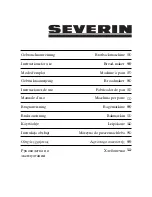
HCD1010R/N, HMF1010R/N, HCD1410R/N, HMF1410R/N
29
Refrigeration system
Condenser unit operation
The condensing unit is weatherproof and equipped to operate in ambient temperatures from –20 F to 120 F (–29 C
to 48.9 C). The condensing unit is controlled by a low pressure control, which works in concert with a refrigerant
solenoid valve on the evaporator module. On start-up, the refrigerant solenoid valve opens and suction pressure
rises above the “on” set point of the control. The compressor and fan turn on and the refrigeration system operates.
Upon shut down, the refrigerant solenoid closes. The compressor will pump down the ice machine evaporator and
suction line until the low “off” set point is reached, at which point the compressor and fan will turn off.
Low ambient operation: Reliable operation at low outdoor ambient temperature is achieved with a pumpdown
cycle, a crankcase heater and a head pressure control valve. When the outdoor ambient falls, the condensing
pressure falls. This causes the discharge pressure to fall as well. When the discharge pressure falls below the dome
pressure, the valve modulates open to the discharge port which allows discharge gas to bypass the condenser.
Mixing the discharge gas with the liquid creates a high pressure at the condenser outlet, reducing the flow and
causing liquid to back up in the condenser. Flooding the condenser reduces the area available for condensing. This
reduction in effective condenser surface area results in a rise in condensing pressure. During summer conditions,
the discharge pressure is high, thus closing the discharge port of the valve. Hence, there is full liquid flow from the
condenser to the receiver.
A check valve is installed in the liquid line between the liquid receiver and the condenser to prevent liquid
migration from the receiver to the condenser during the off cycle. A second check valve is installed in the discharge
outlet of the motor compressor to prevent any oil from migrating onto the compressor head during an off cycle.
A low pressure control will start the condensing unit anytime the low side pressure rises above the C/I setting
of the control. The system contains a crankcase heater which is energized via the contactor of the compressor
during any off cycle. It is de-energized whenever the compressor is energized. This keeps the oil temperature
in the compressor sump warmer than any other wetted surface to prevent liquid migration from settling into the
compressor sump to prevent flooded compressor starts in extreme outdoor temperatures. The liquid receiver
also contains a heater which is controlled by a thermostat to be energized at temperatures below 60°F and
de-energized above 80°F. This is to maintain sufficient refrigerant pressure at extreme outdoor temperatures to
activate the pressure control.
1010 - Refrigerant pressure data
Air-cooled condensers (air)
60 F/16 C
70 F/21 C
80 F/27 C
90 F/32 C
100 F/38 C
Pressure (psig) discharge/suction
202/33
229/35
255/37
275/38
295/39
1410 - Refrigerant pressure data
Air-cooled condensers (air)
60 F/16 C
70 F/21 C
80 F/27 C
90 F/32 C
100 F/38 C
Pressure (psig) discharge/suction
198/31
233/32
268/34
287/36
305/37
Summary of Contents for Horizon Elite HCD1010R/N
Page 2: ...2 HCD1010R N HMF1010R N HCD1410R N HMF1410R N...
Page 38: ...38 HCD1010R N HMF1010R N HCD1410R N HMF1410R N Electrical box 1 7 4 3 2 8 6 5...
Page 42: ...42 HCD1010R N HMF1010R N HCD1410R N HMF1410R N Skins assembly 10 5 4 3 6 8 7 11 9 2 1...
Page 48: ...48 HCD1010R N HMF1010R N HCD1410R N HMF1410R N...
Page 49: ...HCD1010R N HMF1010R N HCD1410R N HMF1410R N 49...
















































